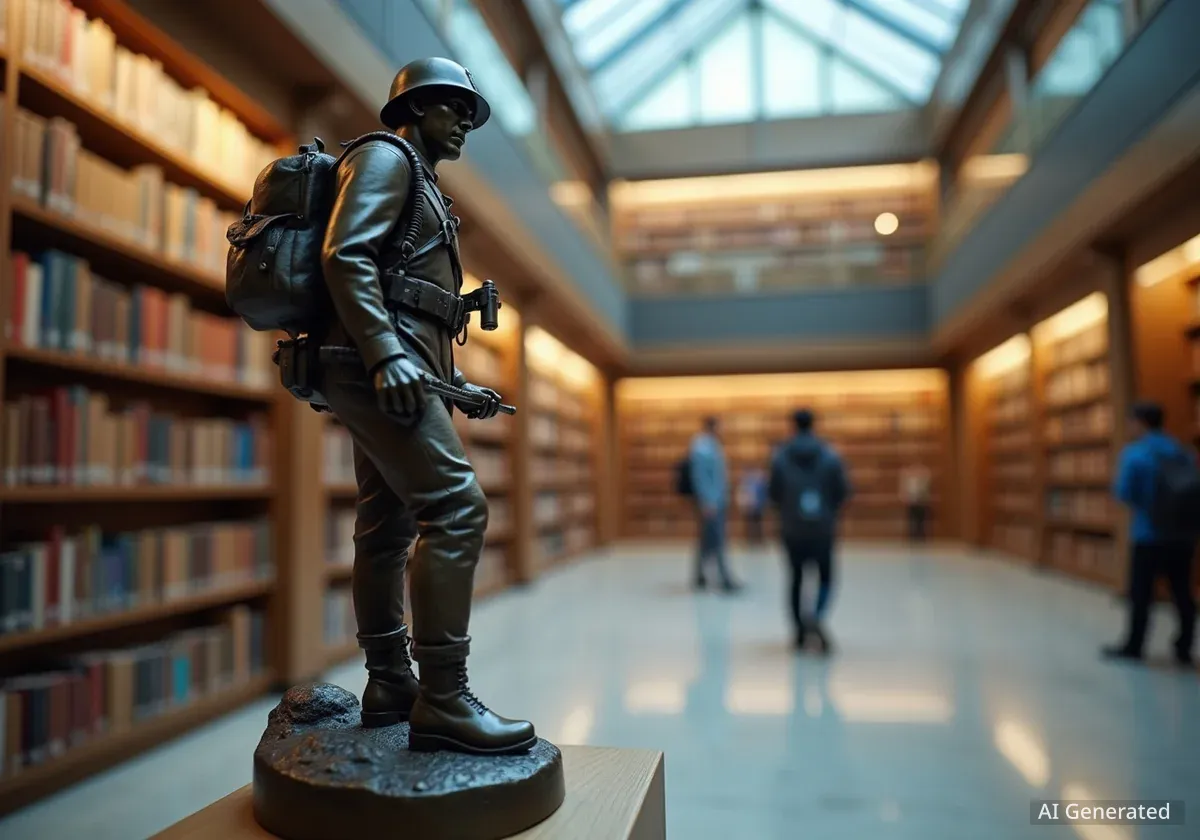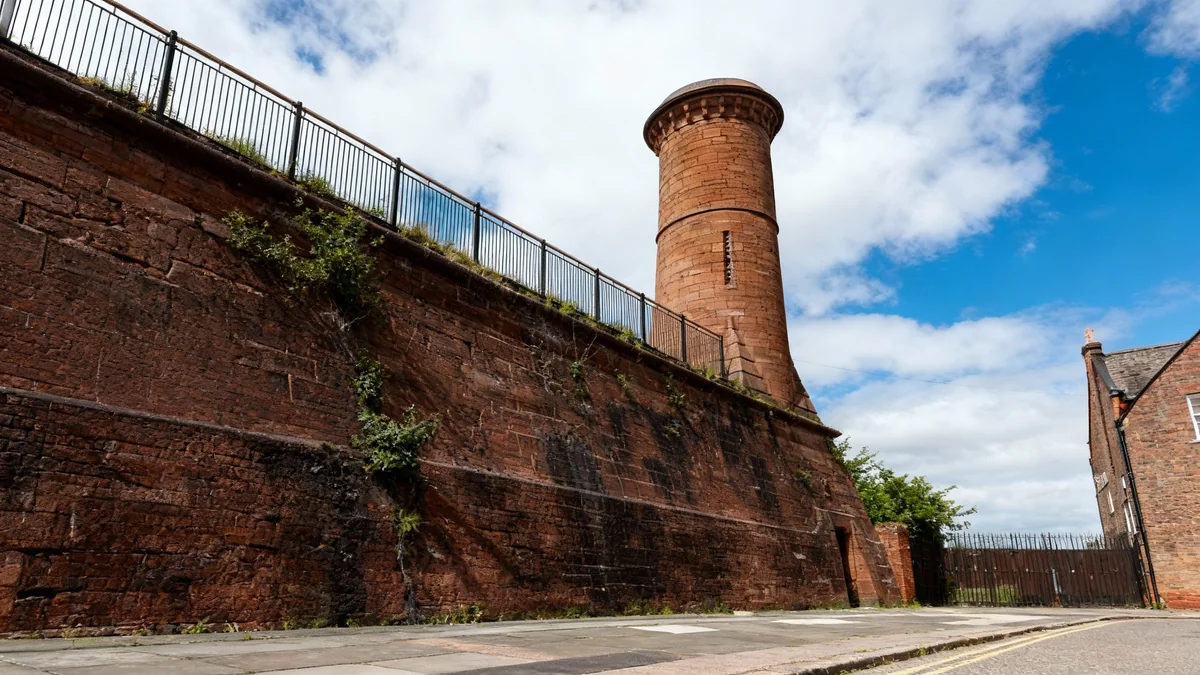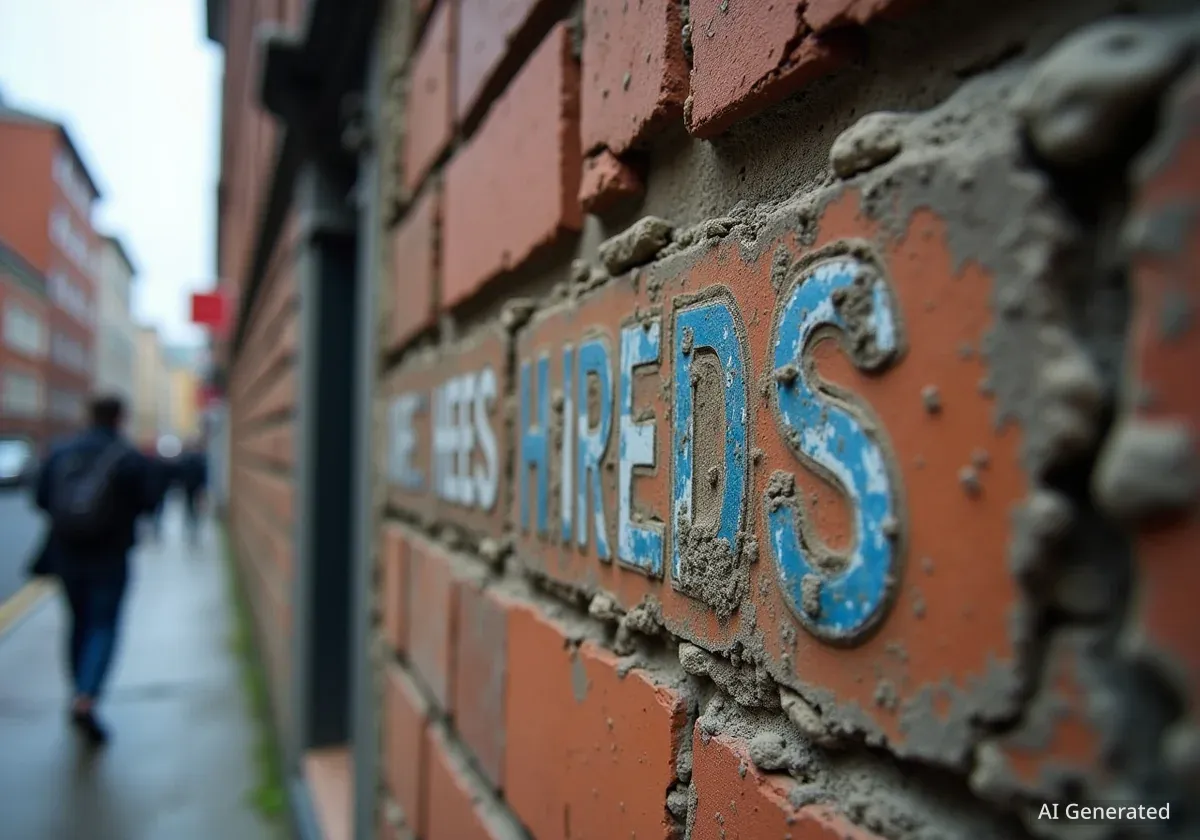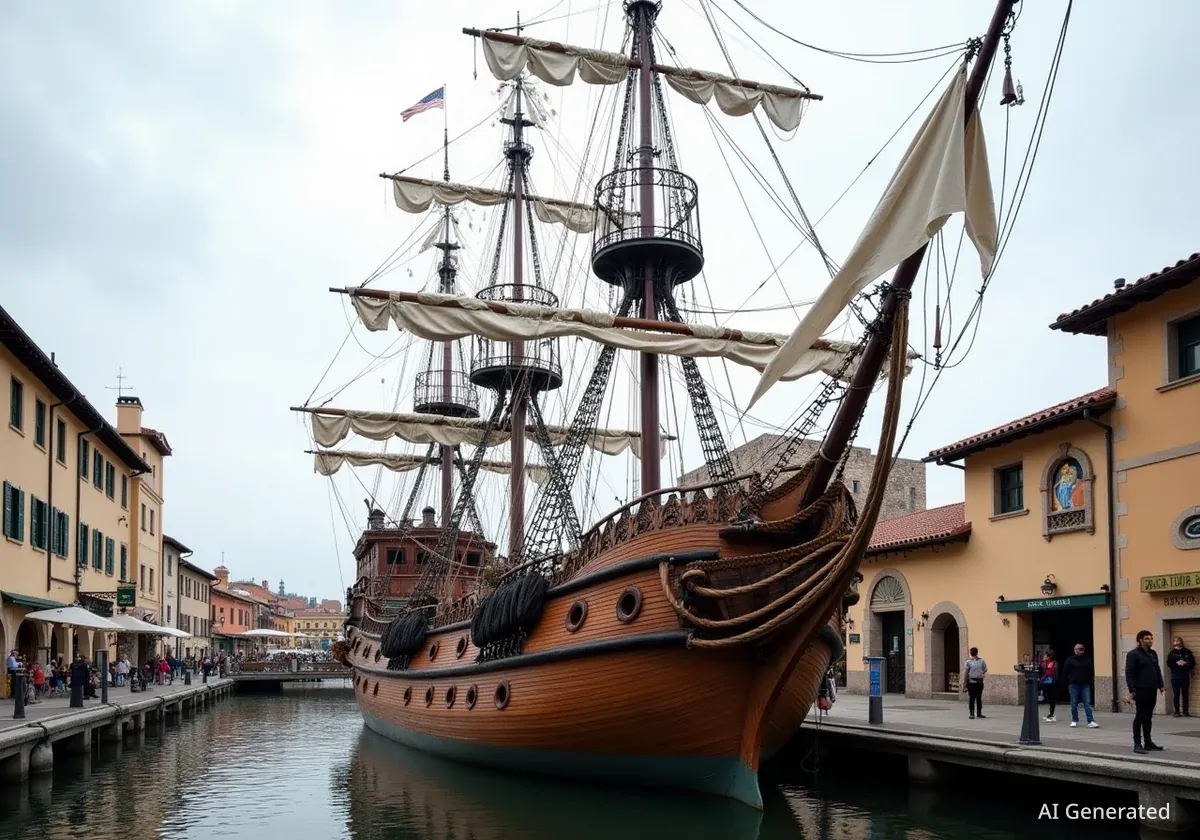A new bronze sculpture commemorating the contribution of the British Indian Army during the Second World War has been unveiled in Liverpool. The artwork, commissioned by the Royal British Legion, is now on display at the city's Central Library to mark the 80th anniversary of the war's end.
Created by British artist Mahtab Hussain, the 120kg sculpture features five figures in uniform, representing the diverse faiths and backgrounds of the soldiers who served, including Gurkhas, Muslims, Sikhs, and Hindus. The piece aims to bring recognition to what is often called the 'Forgotten Army'.
Key Takeaways
- A new 120kg bronze sculpture has been unveiled at Liverpool's Central Library.
- It honours the 2.5 million soldiers of the British Indian Army who served in WWII.
- The artwork was created by artist Mahtab Hussain in partnership with the Royal British Legion.
- It is the centerpiece of a national touring exhibition titled 'The Forgotten Army'.
- Liverpool John Moores University students contributed digital content and a performance for the launch.
A Monument to a Forgotten Contribution
The sculpture serves as a powerful reminder of the largest volunteer army in history. During the Second World War, more than 2.5 million men and women from pre-partition India served alongside Allied forces. This new artwork, situated in Liverpool's Central Library until mid-November, aims to ensure their service is acknowledged and remembered by new generations.
The piece was unveiled on Saturday as part of a launch event. The artist, Mahtab Hussain, has a personal connection to this history, as his own grandfather volunteered to serve in the British Indian Army. This link fueled his passion for the project and for telling a more inclusive story of the war effort.
The Artist's Perspective
During the unveiling, Mahtab Hussain spoke about the gaps in his own education regarding the war. He highlighted the need to broaden the historical narrative to include all who participated.
"Learning about the Second World War at school was very much a ‘white’ experience, I had no idea the British Indian Army also fought or that they had more than 2.5 million soldiers," Hussain stated.
He emphasized the importance of recognizing the collective effort that led to victory. "When Britain won the war, they did so with the help of millions of soldiers from pre-partition India and around the Commonwealth. It’s important that all aspects of the story are told and everyone is included in Remembrance," he added.
Sculpture Details
- Artist: Mahtab Hussain
- Material: Bronze
- Weight: 120kg
- Subject: Five figures representing the British Indian Army's diversity (Gurkhas, Muslims, Sikhs, Hindus).
- Models: Based on 3D scans of currently serving British soldiers with family connections to WWII.
The 'Forgotten Army' National Exhibition
This sculpture is the cornerstone of a wider Royal British Legion exhibition, 'The Forgotten Army'. The exhibition is designed to highlight the multi-faith and multicultural contributions from across the Commonwealth during both World Wars. Liverpool serves as the launch city for this important national tour.
After its stay at the Central Library, the exhibition will travel to several other key locations across the country. These include the Royal British Legion’s National Memorial Arboretum in Staffordshire, Oldham Art Gallery, and Leicester Museum and Galleries. The tour aims to bring these often-overlooked stories to a wider audience.
Gail Walters, Head of Network Engagement at the RBL, explained the project's core mission. "The contributions from many different countries – including those in the Caribbean and South Asia – have moulded Britain as it is today," she said. "The very nature of Remembrance is about inclusivity and unity – all service should be recognised and remembered."
A Collaborative University Partnership
The launch of the exhibition in Liverpool was enhanced by a significant collaboration with students from Liverpool John Moores University (LJMU). Students from the Liverpool School of Art and Creative Industries were involved in co-producing key elements of the project.
Their contributions provided a modern, interactive dimension to the historical narrative. These included the development of an augmented reality (AR) experience to accompany the sculpture and the creation of 'The Forgotten Army' website. The site features shadow puppet animations, interviews with descendants, and archival imagery.
LJMU Student Contributions
- Digital Media: An augmented reality (AR) experience and the official 'Forgotten Army' website.
- Animation: Shadow puppet animations to tell soldiers' stories.
- Performance: A bespoke live performance for the launch event, which brought the stories of the five sculpted figures to life.
- Research: Students conducted interviews and researched archival materials to inform the content.
Bringing History to Life
In addition to the digital elements, LJMU students wrote, directed, and performed a special piece for the launch event. The performance was designed to animate the stories of the five figures depicted in the bronze sculpture, providing a human context to the static artwork.
Professor Rachel McLean, Director of the Liverpool School of Art and Creative Industries, praised the students' involvement. "It’s been a real privilege for our students to be involved in this project, delving into the forgotten stories of the soldiers who are honoured in this poignant sculpture," she said.
She noted the practical experience gained by those involved. "Students across a range of LJMU degree programmes have grasped the opportunity to put their skills into practice... It’s an experience that our students will certainly never forget," Professor McLean concluded. The project provided a unique opportunity for students to engage with history and contribute to a national act of remembrance.





